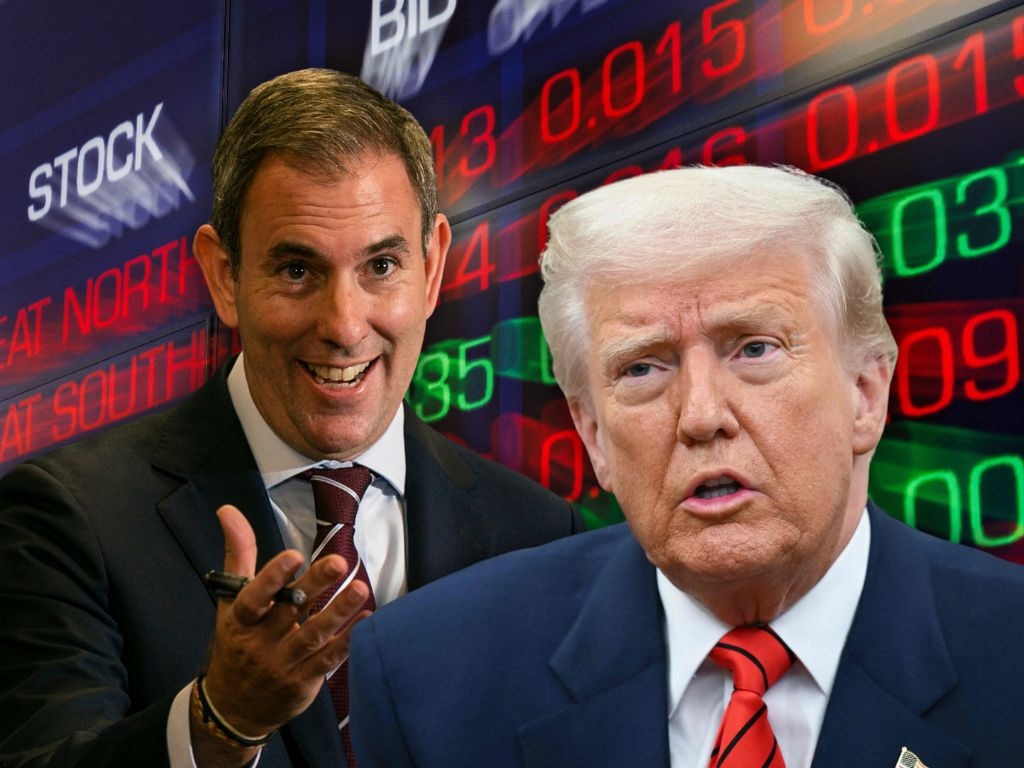Treasurer’s job is to spin a compelling story
Long experience with Australian budgets shows that if a treasurer can’t balance the books, he devotes much energy to balancing the blame. If you ever find yourself in this thankless role the equation is simple: deficits are always caused by someone, or something, that isn’t you.
In the first term of government, blame balancing means pinning whatever is going pear-shaped on the opposition. With enough imagination you can stretch this blame across several terms. The opposition is a mythological beast that once decimated this county and desires power only to inflict pain on the people stupid enough to vote for it.
Hands up who wants that?

Then there is credit banking. Always claim credit for unexpected revenue rises. That usually means commodity price spikes but god knows how these things actually work. Many treasurers don’t because they are mostly arts and law graduates. If you hail from the left of politics it’s handy to know that commodities include seriously bad things such as coal and gas. Even iron ore is suspect because it involves mining.
Commodities are goods your colleagues demonise by day before they come begging for the tainted money they raise by night.
Revenue hikes that deliver unexpected money are a sign that you are a genius and “the plan” is working. Every fibre in the being of the opposition is a threat to the pot of gold “the plan” has buried at the end of a rainbow that lies on the other side of several elections. That plan mostly involves spending more than you earn but that’s OK because this can be called an investment in the future.
Always say the future will be made in Australia, even though Australia now sits at 102 – between Senegal and Yemen – in Harvard’s Atlas of Economic Complexity, down from 63 in the year 2000 and dropping like a stone. Australia is to “made” what North Korea is to “fun”, but who actually reads what academics write? There are bonus points for labelling any project green. The punters just adore green things: windmills; solar panels; Kermit.
Speaking of sock puppets, when it comes to promoting green investments in the budget sales pitch you can count on enthusiastic support from billionaires whose hobby is planetary Messiah. They do this because it makes them popular with the rich people who used to buy Teslas before Elon went mad.
Now they buy electric cars and solar panels from China, where they are not made by bad billionaires but slaves. You do not want to mix with bad billionaires, but a good billionaire is easy to spot because they are always opposed to slavery. Everywhere but China. But no one is perfect and no one wants to upset China because that is both bad for business and racist.
Good billionaires can literally sell sunshine as long as you give them billions of taxpayer dollars and they get to keep any profit.
This is why they are rich and you are treasurer. But don’t worry, if the project is called green hydrogen there won’t be any profit because there won’t be any hydrogen.
As a bonus, the billionaire will probably let you fly in their private jet to inconvenient parts of Australia where there is no Qantas Chairmans Lounge. There you can promise a green future to workers whose jobs you plan to extinguish in the present.
The investment will probably never deliver a return and must be paid for with future tax rises. No need to dwell on that because by then you will be an ambassador in Washington or London and it will be somebody else’s problem.
The billionaire will have moved on to hoovering up government subsidies for importing fossil fuel to prop up the dysfunctional green electricity grid he promoted. Or sponsoring monster truck rallies.
Where was I? Oh, the budget.
The numbers in the many bewildering budget tables basically come in two baskets. The line marked “actual” means these numbers are real. They mean something because they actually happened. Someone actually counted past revenue and spending and added it all up. If the sum is a deficit it’s all actually the opposition’s fault.
Every number after that is lumped in the basket of estimates. This is a guess about what may happen and is Treasury-speak for voodoo because nobody can predict the future. Estimates cover the current budget and the following three years. There is a fighting chance the numbers for the first year may fall roughly near the money you raise and spend but it’s best not to count on it – mostly because your colleagues will always want to spend more than you raise.
The next three years of estimates are fantasy numbers but they are useful because everyone loves a good fantasy and it is here where the master treasurer shines.

Your job as a chief storyteller will define whether you will be the JRR Tolkien of treasurers or EL James. That said, Fifty Shades of Grey did make a lot of money and grey is a much better shade for politicians to work in than black and white.
Any numbers marked “projections” are just Treasury boffins taking the piss because some predict a future 10 years hence. By definition projections can’t plan for things such as the financial crisis or Covid, or anything much else that routinely happens in the real world. Things such as Donald Trump, Vladimir Putin and Xi Jinping.
Estimating commodity prices is something the Treasury is so bad at it falls into a class of alchemy called assumptions. As treasurer you usually don’t read the assumptions because they are buried in the footnotes. Assumptions are worse than estimates and projections because they are completely made up. Think wet finger in the wind.
But assumptions are the secret sauce of modelling because with them you can build your own virtual universe and cast yourself as a hero slaying imaginary demons.
Draw comfort from the fact that assumptions underpin all computer models, worldwide. Economic models. Climate models. Pandemic models. Governments everywhere spend trillions of dollars based on models that claim to predict an unknowable future and every single one rests on a set of assumptions that someone, somewhere simply invented.
They couldn’t all be wrong. Could they? That would be absurd.
Numbers that combine assumptions of future spending and revenue with the weather and unwavering global co-operation – all extrapolated across a century – can be found under the headings “climate change” and “net zero”. These are beyond question. Anyone who doubts them is a climate-change denier.
That’s pretty much it. The numbers don’t lie; they just don’t tell us much. Lying is your job. The government’s future hangs on your skill as a mythmaker. The spin is the strategy and the joke is on the rest of us.





Let the excuses begin.